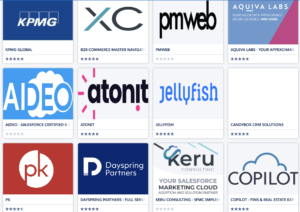For product and consumer-oriented companies where name recognition and brand preference are so important, it may seem obvious to invest in branding from the onset. Yet services companies often overlook the value in doing the same for their own businesses. When people are your product and differentiation is hard to come by, having a solid brand (and ensuring your company embodies it) may be even more important.
Here are just a few examples of what investing in your brand will do:
It builds trust and loyalty — internally and externally. A differentiated and consistent brand that truly reflects who you are as a company will help people remember you and stick with you. This is true for customers and employees alike. Brand advocates and evangelists are created when people connect emotionally with your approach, mission, values or philosophy. This is the foundation of a brand. The visual identity and messaging just brings it to life.
It can help you make money. Being the preferred brand in a competitive space, gives you pricing power. Customers will pay more for a brand they trust and who they know does quality work, which means you can charge more for services than a non-name competitor.
It creates the foundation of your marketing operation. Having a solid brand will provide you with the “how” to do everything. How you talk about your company, how you talk about your services, and provides consistent design elements and language that can be used across all your marketing (from your website to your events to the boilerplate on your press releases). When it comes to brand, consistency is critical.
It makes it easier for your sales team to talk about your company. If your sales team has a solid understanding of who you are as a company, what you do and what you stand for, it will make their jobs of selling the benefits of your services and what it’s like to work with you that much easier. That can directly translate to your bottom line.
It can help you save money. Having a well defined brand will also help you get staff and freelancers up to speed quicker and more efficiently, and reduce rework. Without a brand guide to inform them on what voice to use, messaging to lean on, and designs to utilize, you’ll end up with a splintered, inconsistent experience and a lot of extra cycles.
It helps you stand out from competitors. Take one look at Salesforce AppExchange (pictured below) to see what I mean. A whole lot of blue, and a whole lot of clouds. Thousands of companies list their services on AppExchange, and the ones that stand out are those who have not chosen the Salesforce-inspired visuals. When you dive deeper, some of their messaging has the same problem – it all sounds the same.

If your brand is differentiated, it will automatically make you stand out from the crowd and will make it easier for customers to remember you and keep coming back to you.
The basics of branding for services
Needless to say, the benefits of having a strong brand are endless, if done right. So how do you make sure you have a strong brand? Below is an overview of the basics:
Talk to your customers. The best way to know who your customers are, how they buy and why they like working with you, is to ask them. Customer interviews are invaluable and can give you insight into what they value, why they are buying, why they chose you over competitors, and what they want in the future. This can help you position your brand and ensure it’s connected in a real way to customer needs and pain points.
State your mission. Your brand’s mission should explain to the world why your organization exists. This clear and concise message should be something that both inspires and motivates. It should also benefit people outside of the organization. If your mission starts with “to be the leader in…”, time to start again. That’s a goal, not a mission. Your mission should be your organization’s North Star. One that helps define you but also guides your strategy and decisions. A great mission will also help you attract and retain talent. Employees who believe in a company’s mission are more likely to not only stay at a company, but perform better, too.
Define your values. Values are the principles and beliefs of a company that shape culture and drive behavior. Essentially, they are how you need to act in order to make your mission a reality. They should be in an active voice, clearly stated, differentiated, and there should not be 10 of them. Consumers and employees want to spend their time and their money with brands whose values align with their own.
Think about how you position your brand in the market. Do you know what makes you truly different from your competitors? This starts with knowing your customers (per the first point), the space you play in, and the competitive set. This is why it’s important to do real research into your competitors, where they are weak, and how you can stand out. Get to the heart of that, then infuse it into your brand and use it to position yourself in the market.
Find your brand voice and personality. Just as every human has a personality, so do brands (yes, even yours). Is yours confident with a dash of curiosity? Adventurous with a specific destination? Or more professional and straightforward? Your personality should reflect your culture while keeping the audience in mind. Brainsell is one example of a brand that I think conveys their personality – witty, snarky, and smart – both thoughtfully and consistently throughout its marketing. The key here is knowing what works for your customer base.
Language is important. When it comes to talking about your services, the most important thing is to frame them in the same way that your customers think about buying. If your customers are looking for integration services, just call it that. Don’t try to name your service “systems synthesis” or something else that customers can’t relate to.
With that said, while you should certainly be straightforward about the services you offer, there is room to take something like “people centric” and reframe it in a way that’s playful and clever, like how Korn Ferry states that they are “a radically human organization”. Personally, I find metaphors work well. Just as your design helps you differentiate your brand, so do your words.
Invest in a differentiated design. The reality of service-based businesses is that many different companies may be offering the same service out there. Therefore, as I noted earlier, it’s worth making sure your design will stand out in a crowd visually to help differentiate your brand. A few ways to do this include:
- Colors. Perform a color study to look at what competitors are doing and find out what colors you can use to position your brand to stand out.
- Photo Styles. We’ve all seen the generic stock images of hands on a keyboard, generic men shaking hands, and workers in an office. Don’t do it! Your brand should be a representation of who you are as a company, your culture, and your personality. Think out of the box when it comes to imagery. Imagery taken from a different angle or in unusual lighting, for instance, can make a difference. You can also consider applying a treatment such as filters, or adding illustrations, textures or patterns to the image in order to make it unique and eye-catching. Hakkoda is a great example. We used stock images to create beautiful collages that represent the company’s culture — including mountains, flowers and beautiful patterns that hail from Costa Rica, where the company has a large presence. The images are all treated and brought together in an interesting way to make it look totally unique.

- Consistency. When you’re creating graphic styles, think about the need for consistency across all touch points. Be strategic about how it all looks, from your website and social feeds, to your invoices, and everything in between.
Establishing your brand at the onset is no small task, but it’s one that will pay dividends in the long run. When you think about the most successful companies out there – whether product or service-based – chances are you’re remembering them because of their brand. A brand that is memorable, easy to identify, reflective of who they are and one that you connect with personally.
Don’t you want your customers, partners and employees to feel that way about your company?


